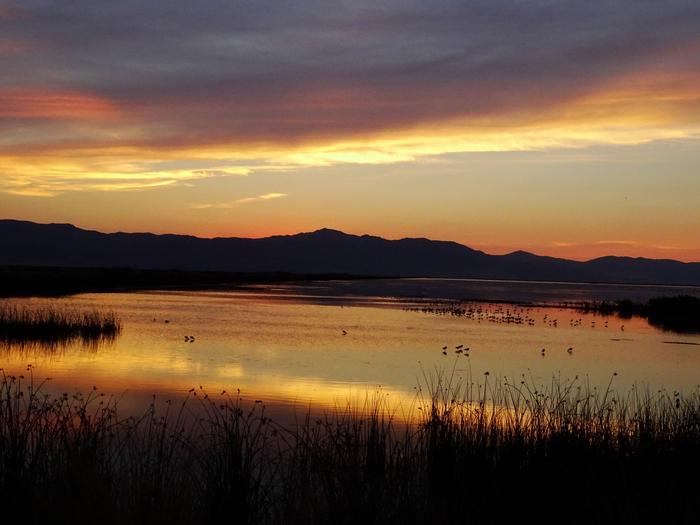Bear River Migratory Bird Refuge
Fish and Wildlife Service, Utah.
Each unit of the National Wildlife Refuge System is established to serve a statutory purpose that targets the conservation of native species dependent on its lands and waters. All activities on those acres are reviewed for compatibility with this statutory purpose.
Established in 1928 by Congress (Public Law 304) and the initial boundaries designated by Presidential Proclamation (2011) in 1932, Bear River Migratory Bird Refuge was one of the first refuges to join a system of lands now encompassing over 560 refuges in the National Wildlife Refuge System - a network of lands set aside and managed by the U.S. Fish & Wildlife Service specifically for wildlife. The Refuge and other wetlands associated with the Great Salt Lake provide critical habitat for migrating birds, over 250 species moving through this area annually by the millions to rest and feed. As part of the Bear River Bay, the Refuge is designated as a Western Hemisphere Shorebird Reserve Network site, a globally important shorebird area.
The Refuge lies along the eastern edge of the Pacific Flyway and the western edge of the Central Flyway, making it an important resting, feeding, and nesting area for birds in both flyways. Of more than 250 bird species that use the refuge, 67 species nest on the Refuge. American avocets and black-necked stilts nest by the thousands along Refuge dikes and roads. White-faced ibis nest in dense emergent vegetation in large colonies of up to 10,000 birds. Migrant tundra swans can number in the tens of thousands in the spring and fall. The Refuge uses a complex system of dikes and water control structures to provide different water depths for a variety of waterbird species over the seasons.
On the ancestral homelands of the Shoshone, Paiute, Bannock, and Ute people known as the Newe or Meme (the People), the Refuge lands and waters support diverse plant and animal species in a mosaic of mudflats, river deltas, brackish and freshwater marshes, temporary ponds, and uplands. Refuge uplands have scattered knolls that form a unique ecological community in the Bear River delta.
Today, Bear River Migratory Bird Refuge contains nearly 80,000 acres of marsh, open water, uplands, and alkali mudflats. The marshes and open water are managed using a complex system of dikes and water control structures to provide a variety of water depths suitable for the needs of different waterbird species. The Refuge is an excellent place to observe wildlife along a 12-mile auto tour route, as well as enjoying hunting, fishing, and wildlife photography.
Nearby Activities
- Auto Touring
- Biking
- Birding
- Educational Programs
- Fishing
- Hiking
- Hunting
- Interpretive Programs
- Photography
- Picnicking
- Wildlife Viewing
Directions
The Wildlife Education Center is located just 1/4 mile west from I-15, exit 363. The auto tour route is located 12 miles west from I-15, exit 363. Please note the auto tour route is also 12 miles long, so the round trip is 36 miles.

